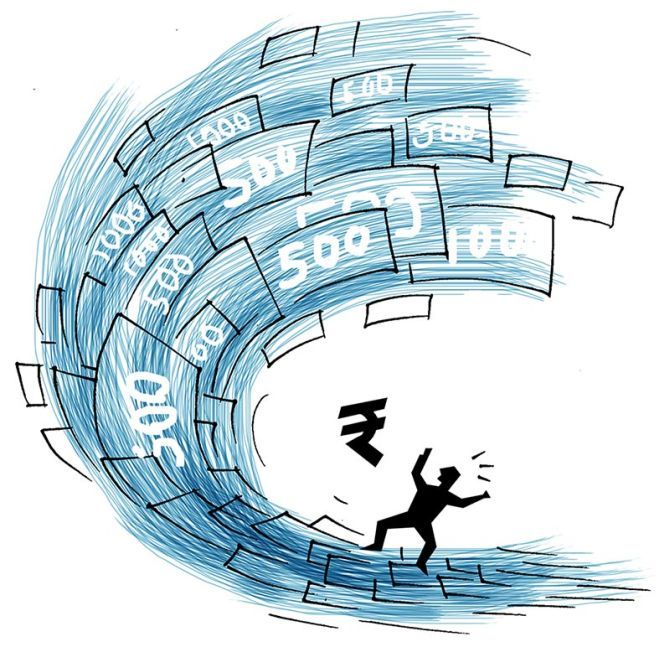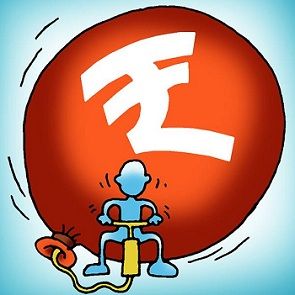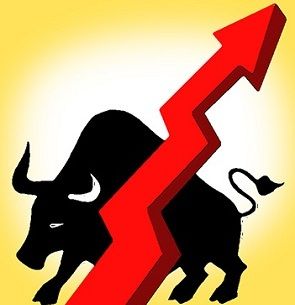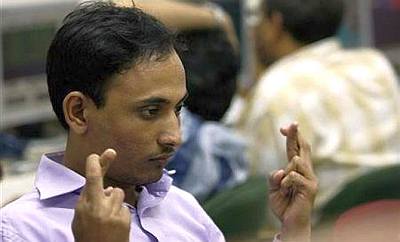Joydeep Ghosh takes stock of personal finances after the life-altering surprises of 2016.
Illustrations: Dominic Xavier/Rediff.com

Imagine earning an annualised return of 17 percent from a debt mutual fund scheme. Surprised? But, this is what happened in 2016. The best-performing gilt fund's return was as good as equity returns in a good year.
There were a number of other surprises in store for consumers and investors.
Debt fund investors have a reason to gloat
 Who would have thought the yields of the government's 10-year benchmark would fall 114.6 basis points, the biggest fall since 2008. The good news is debt fund managers were in a perfect situation to take advantage of this slide.
Who would have thought the yields of the government's 10-year benchmark would fall 114.6 basis points, the biggest fall since 2008. The good news is debt fund managers were in a perfect situation to take advantage of this slide.
As Nilesh Shah, managing director, Kotak Mutual Fund, says: "Fund managers captured most of the move."
And, the performance of fund houses attests to this.
Consequently, the category average returns of gilt funds -- medium and long term -- was 14.7 per cent. L&T Gilt Fund (direct) topped the returns with 17.7 per cent. But, even the worst performer in the category -- Sundaram Gilt Fund (regular) -- didn't do too badly at 11.2 per cent.
As A Balasubramanian, chief executive officer, Birla Sunlife Mutual Fund, says: "Fixed income managers did exceedingly well in not only capturing the interest rate movement, but also investing in the right segment of the yield curve to capture the favourable price movements of securities."
He says the yields of 10-year benchmark bonds should hover at 6.25-6.5 per cent in 2017.
What led to this sharp drop? According to Shah, interest rates declined in calendar year (CY) 2016 against the backdrop of globally rising interest rates, leading to market yields falling faster than policy rate cuts.
"This fall happened as liquidity kept on getting added and inflation came down. In April, the Reserve Bank of India changed its stance, leading to high liquidity in the banking system. Then, demonetisation brought another upward jump in liquidity and poor credit offtake pushed banks to invest in gilts, bringing down yields at a faster pace," adds Shah.
Sensex averted a free fall in a difficult year
 In a year when life-changing decisions that changed the contours of a country or economy were taken, the Sensex, lost only 2 per cent. Whether it was Brexit, the US Fed rate hike or results of the US presidential election, the Indian markets held their own.
In a year when life-changing decisions that changed the contours of a country or economy were taken, the Sensex, lost only 2 per cent. Whether it was Brexit, the US Fed rate hike or results of the US presidential election, the Indian markets held their own.
Prashant Jain, chief investment officer, HDFC Mutual Fund, argues it was because events outside India have a very limited and transient impact on Indian stocks.
"Indian markets in 2016 have responded more to the fledgling recovery domestically than to global events. Interestingly, after many years, FY17 is the first year where the Nifty's earnings per share estimate has not seen a significant downgrade," says Jain, adding that valuations are quite reasonable now because large-caps have under-performed the nominal growth of the gross domestic product over the past eight years and the market capitalisation to GDP is at attractive levels.
The Indian market was resilient primarily because of the participation of mutual funds and insurance companies.
"The market also withstood selling by foreign institutional investors (FII), especially in the fourth quarter of 2016. Retail investors pumped about Rs 3,500 crore per month through 11 million-plus systematic investment plans in equity funds. They put more money when the markets were down, like in November. This strong support by retail (individual) investors allowed mutual funds to negate FII selling to a great extent," says Shah.
However, on the other side, the market also did not react enthusiastically to passage of the goods and services tax Bill in the Rajya Sabha.
"The Markets had already priced in this development and therefore, there wasn't much of a spike. The real challenge lies now in implementation and the pitch has been queered quite a bit due to demonetisation," says an investment banker who did not wish to be named.
Cashless India a work in progress
 Ninety per cent of transactions in India happen in cash or used to happen in cash, till the demonetisation of Rs 500 and Rs 1,000 was announced by Prime Minister Narendra Modi on November 8. When cashlessness hit many families and businesses, they rushed to download mobile applications and buy point-of-sale machines to make and receive payments.
Ninety per cent of transactions in India happen in cash or used to happen in cash, till the demonetisation of Rs 500 and Rs 1,000 was announced by Prime Minister Narendra Modi on November 8. When cashlessness hit many families and businesses, they rushed to download mobile applications and buy point-of-sale machines to make and receive payments.
Mobile wallet players like Patym, MobiKwik, FreeCharge, etc, have benefited significantly from the move and are reporting doubling and tripling of transactions on their platforms. Similarly, transactions under the newly-launched Unified Payment System have also shown a sharp rise from 287,000 in November to 1 million in December.
However, for customers, going cashless has meant expenses have gone up. The government has tried to reduce the blow by giving 0.75 per cent cash back on purchase of petrol and diesel. Similarly, new policies bought from the portals of LIC and General Insurance Companies will get 8-10 per cent discount. But there are transaction costs attached with debit and credit cards, which can be 1 to 3 per cent.
Moving from shopping in mom-and-pop stores to malls also means an increase in monthly budgets by 5-25 per cent or more. While the drive towards cashless is still to play out, the government, banks and players in the market need to do a lot to make these safe and secure.











